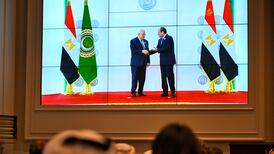Last year was by some measures the safest in the history of commercial aviation, despite two high-profile crashes involving Malaysia Airlines aircraft in which hundreds of people were killed, a leading industry body said on Monday.
While more people died in air accidents in 2014 than the average in recent years, the number of fatal accidents compared with the total number of flights was a record low, according to the International Air Transport Association (IATA).
“While aviation safety was in the headlines in 2014, the data show that flying continues to improve its safety performance,” said Tony Tyler, IATA’s director general and chief executive officer, in a statement.
IATA, which represents about 250 airlines, said in an annual safety report there were 12 fatal accidents in 2014 with 641 fatalities, versus 19 fatal accidents and 517 fatalities per year in the five-year period between 2009 and 2013.
IATA's 2014 statistics did not include the loss of Malaysia Airlines Flight MH17, which was shot down by a surface-to-air anti-aircraft missile in Ukraine last June and so not classified as an accident. All 298 people on board were killed.
“To the flying public an air tragedy is an air tragedy, regardless of how it is classified,” said Mr Tyler. “In 2014 we saw a reduction in the number of fatal accidents - and that would be true even if we were to include MH17 in the total.”
The other high-profile event of 2014, the disappearance of Malaysia Airlines Flight MH370 on a flight from Kuala Lumpur to Beijing on March 8th, 2014, with 239 passengers and crew, has become one of the biggest mysteries in the history of aviation.
An extensive search in the southern Indian Ocean, where satellite data showed that the Boeing 777-200ER ended up after being diverted from its original flight path, has not found any sign of the plane. An investigation report that was released on Sunday did not reveal anything new.
The International Civil Aviation Organization (ICAO), a United Nations body that regulates global aviation, proposed after MH370 that commercial aircraft report their position every 15 minutes instead of the current norm of 30-40 minutes.
Mr Tyler told reporters at a briefing in Hong Kong that such a system would be in place by November 2016. Airlines balked at the December 2015 deadline first proposed by ICAO.
“At the moment there’s no technology that can track aircraft everywhere in the world over time,” he said. “These things don’t happen overnight.”
New space-based technologies might make real-time tracking possible soon, he added.
“The promise is to be able to identify aircraft wherever they are in the world pretty much in real-time with no gaps in coverage,” he said. “It may well be that this is the way we should go, however that technology won’t be available for two or three years to come.”
Reuters








